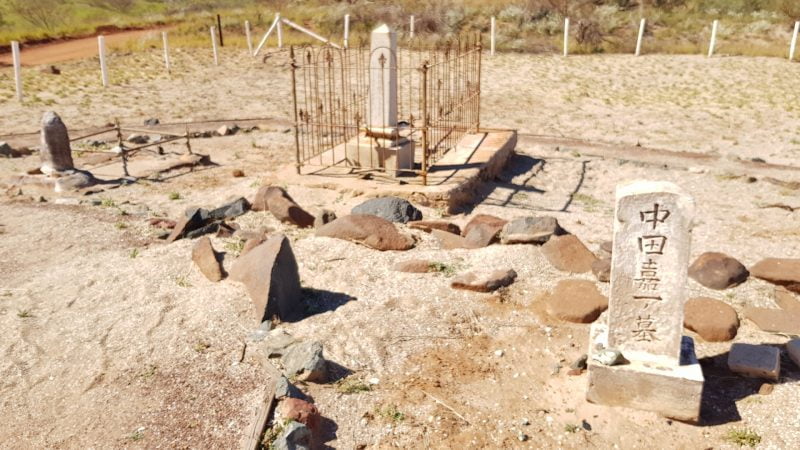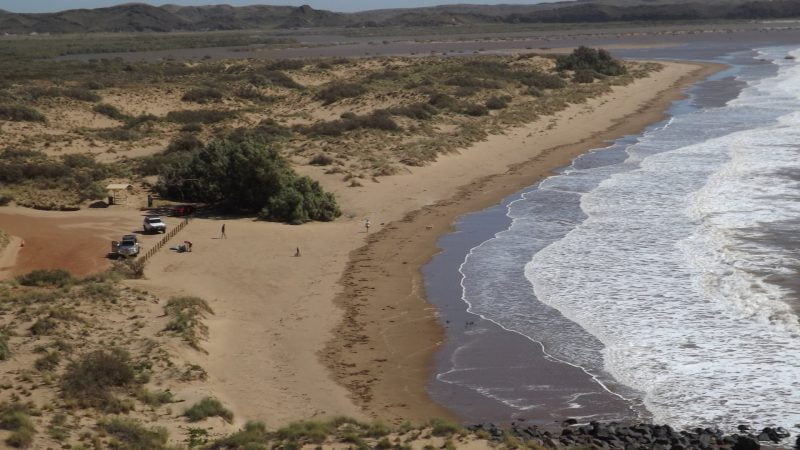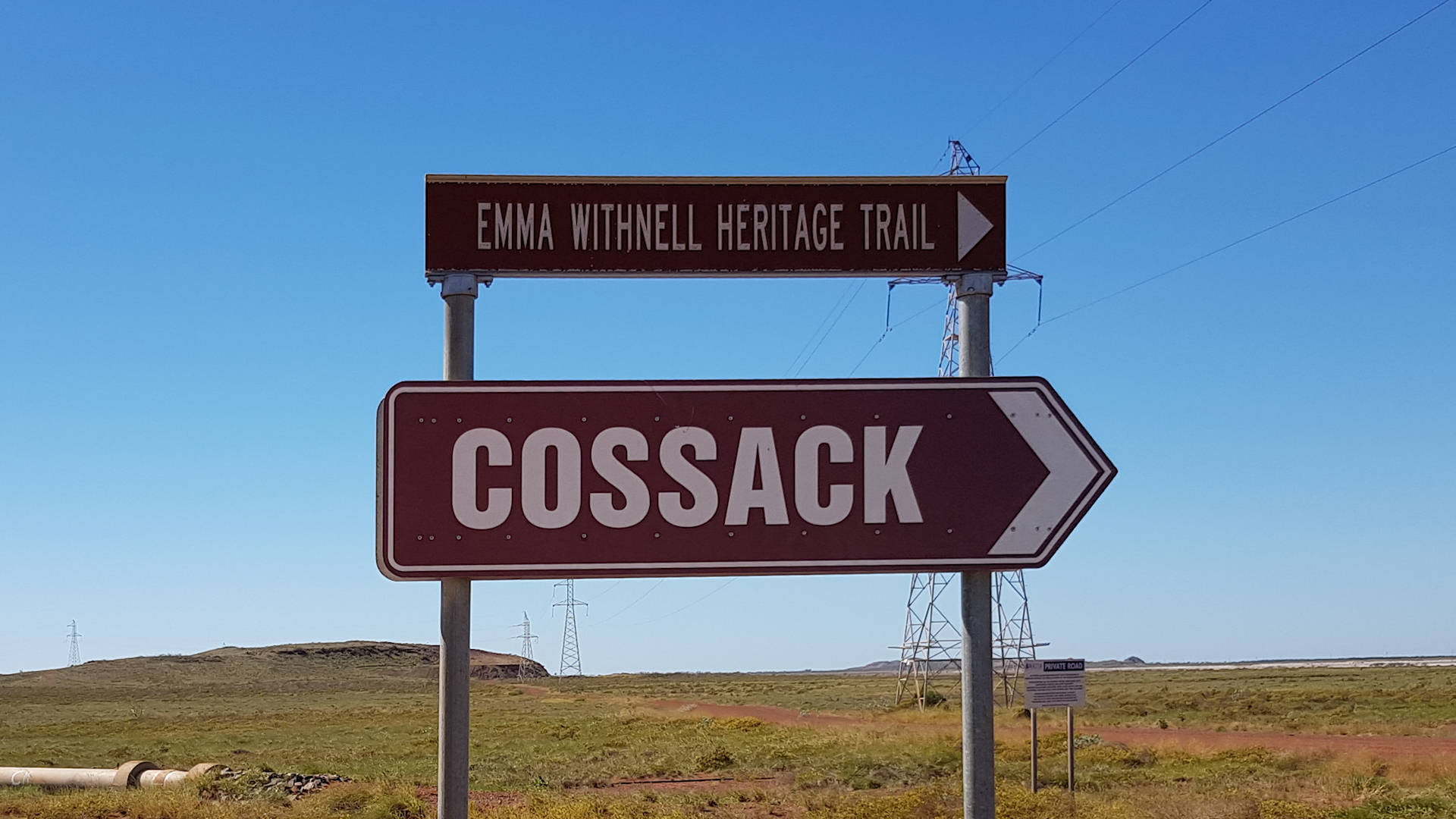
The Emma Withnell Heritage Trail is in Western Australia. The trail is not an official tourist drive but is a 52km driving trail to a number of points of interest for tourists.
The trail is named after Emma Mary Withnell who is known as the ‘Mother of the North-West’ and the ‘first lady of the Pilbara’. She and her husband John Withnell operated a pastoral lease, Mount Welcome Station, around 1864 that later became the site of Roebourne in 1866, the first town in the North West region.
Driving Route
The 52km driving trail starts at Roebourne and goes through Cossack and Wickham, and finishes at Point Samson.
The drive starts at the south end of Roebourne at the Roebourne Visitor Centre and Old Gaol Museum ![]() , in Queen St.
, in Queen St.
Come out of Queen St, turning left to head through the township of Roebourne. Turn right into Point Samson-Roebourne Rd with a brown sign for Emma Withnell Heritage Trail, about 1.7km from Queen St.
Continue on Point Samson-Roebourne Rd for 8.3km and turn right into Cossack Rd at the brown sign for Cossack. Follow Cossack Rd for 8.2km.
Come back from Cossack along Cossack Rd to Point Samson-Roebourne Rd and turn right. Continue for 2.6km to turn into Wickham.
Come back out from Wickham and turn left to continue north around 7.5km to Point Samson.
Points of Interest
There are a number of locations along the trail to see and learn about Emma Withnell, a few at the historical abandoned town of Cossack.
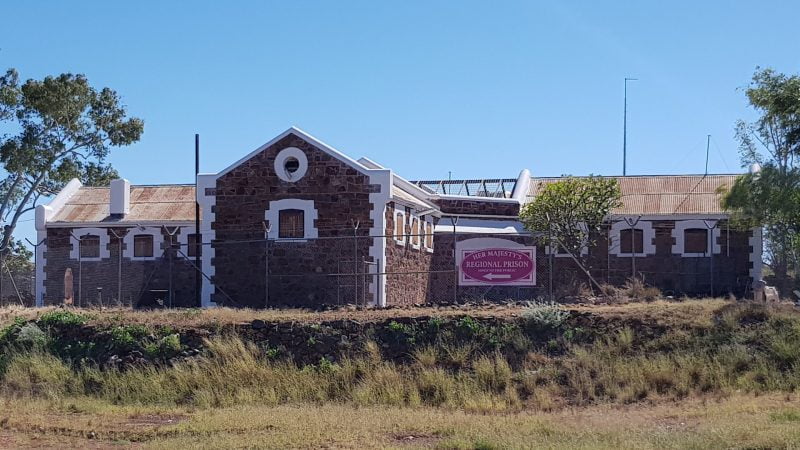
Old Gaol ![]() – Her Majesty’s Regional Prison on the outskirts of Roebourne as it stands today was built in 1896, upgraded from an older four cell gaol first built in 1884
– Her Majesty’s Regional Prison on the outskirts of Roebourne as it stands today was built in 1896, upgraded from an older four cell gaol first built in 1884

Butcher’s Inlet: Land-Backed Wharf – Completed in 1894 this stone wharf is a reminder of Cossack’s importance to the North West as a major port. It consisted of a concrete quay wall with accommodation for two schooners. The inlet wsa named after Chief Officer Butcher, who served under Captain Jarman on the Tien Tsin which landed at Cossack with the first settlers in 1863.

Galbraith’s Store – While earlier stone buildings in Cossack were built of sandstone collected from the beachfront, Galbraith’s Store is unique in that it was the first building to be constructed of local ironstone (or bluestone). Completed in 1891, it wsa used for the storage and sale of general suplies.

Mercantile Store – Built around 1895, this store is one of several stone buildings constructed during Cossack’s heyday as the North West’s major port. It originally housed the Mining Registrar’s Office and quarters, but later it became the Mercantile Store which sold goods and equipment.
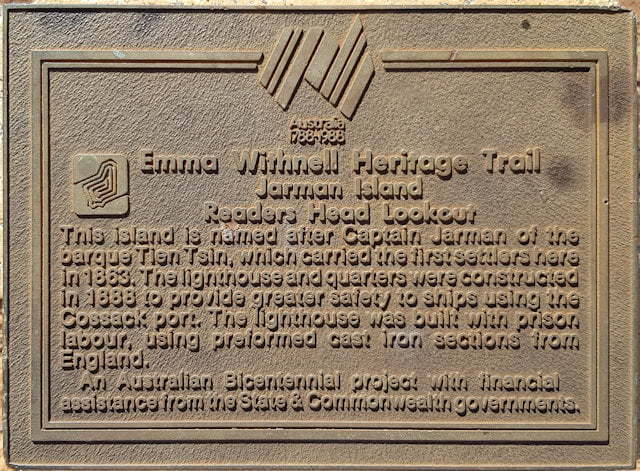
Jarman Island – Readers Head Lookout ![]() – This island is named after Captain Jarman of the barque Tien Tsin, which carried the first settlers here in 1863. The lighthouse and quarters were constructed in 1888 to provide greater safety to ships using the Cossack port. The lighthouse wsa built with prison labour, using preformed cast iron sections from England.
– This island is named after Captain Jarman of the barque Tien Tsin, which carried the first settlers here in 1863. The lighthouse and quarters were constructed in 1888 to provide greater safety to ships using the Cossack port. The lighthouse wsa built with prison labour, using preformed cast iron sections from England.

Schoolhouse ![]() – Completed in 1898 this schoolhouse replaced an earlier one destroyed by a willy-willy in 1894. While the new school was being built parents sent their children on the horse-drawn tram to Roebourne each day for schooling. The building is of a standard design of the period and was used successfully around the State.
– Completed in 1898 this schoolhouse replaced an earlier one destroyed by a willy-willy in 1894. While the new school was being built parents sent their children on the horse-drawn tram to Roebourne each day for schooling. The building is of a standard design of the period and was used successfully around the State.

Tien Tsin Lookout ![]() – This lookout takes its name from the barque ‘Tien Tsin’, which brought pastoralist Walter Padbury to this harbour in 1863. Padbury’s settlement on the banks of the De Grey River, was the first pastoral enterprise in the North West. The town which developed around his landing place wsa originally called Tien Tsin, but was renamed Cossack in 1871.
– This lookout takes its name from the barque ‘Tien Tsin’, which brought pastoralist Walter Padbury to this harbour in 1863. Padbury’s settlement on the banks of the De Grey River, was the first pastoral enterprise in the North West. The town which developed around his landing place wsa originally called Tien Tsin, but was renamed Cossack in 1871.
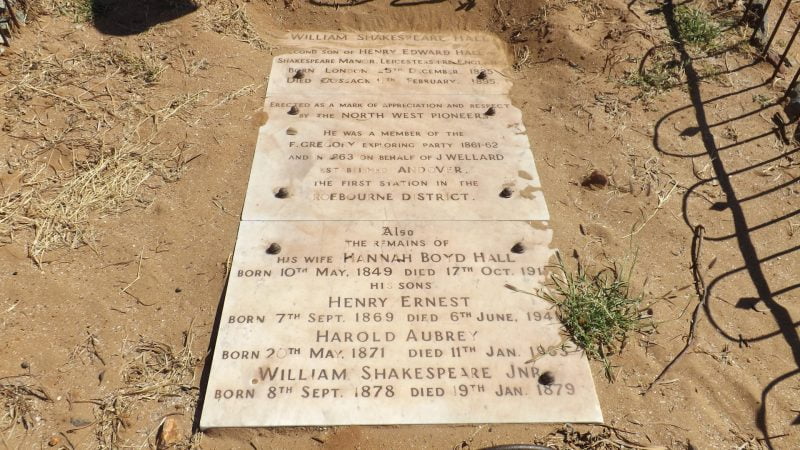
Cemetery ![]() –
–
